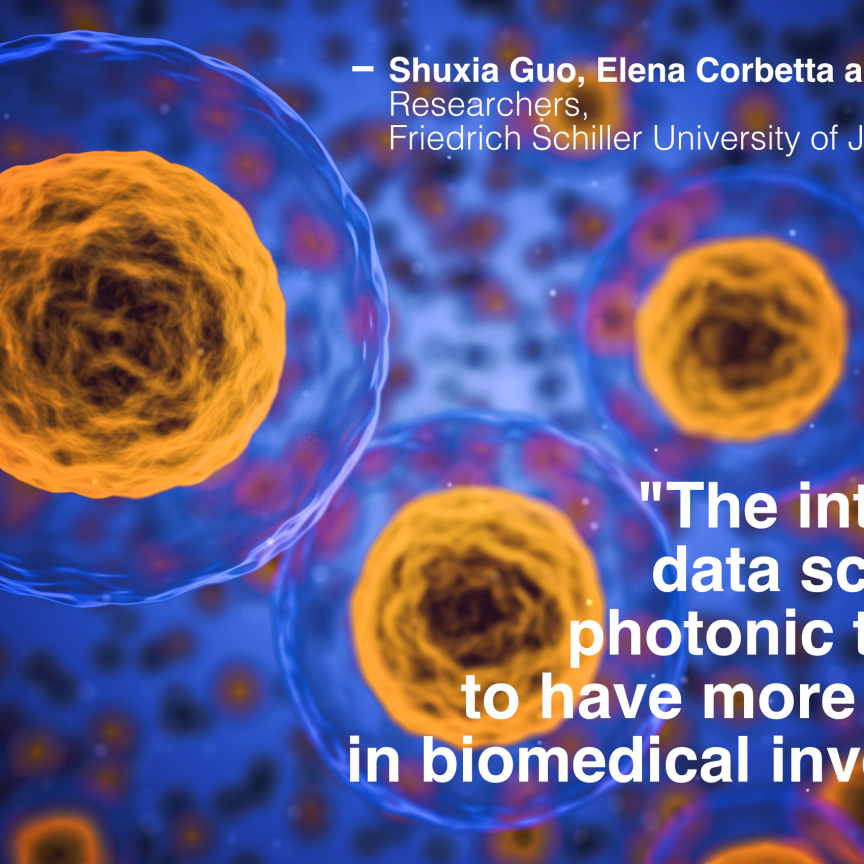A new optical device developed at the University of Michigan can diagnose lung cancer via a blood test 10 times faster and with 14 times more sensitivity than previous methods.
The technique uses gold nanoparticles that interact with light, along with a microfluidic microchip, to distinguish healthy patients from lung cancer patients.
Electro Optics speaks to Nicholas Kotov, head of U-M’s Kotov lab, about next steps towards clinical translation, and how photonics companies can help.
Exosomes interact with light in a unique way
Once thought to be trash ejected from cells for cleanup, researchers discovered in the past decade that exosomes are tiny parcels containing proteins or DNA and RNA fragments that are valuable for communication between cells. Although healthy cell exosomes move important signals throughout the body, cancer cell exosomes can help tumours spread by preparing tissues to accept tumour cells before they arrive.
"Cancer exosomes leaving the tumour microenvironment go out and kind of prepare the soil. Later, the cancer cell seeds shed from the tumour and travel through the bloodstream to plant in the conditioned soil and start to grow," said Sunitha Nagrath, U-M professor and co-author of a study published in Matter.

Professor Sunitha Nagrath. Image: Brenda Ahearn, Michigan Engineering
Exosomes carry proteins both inside the parcel and on their outside surface. Like many biological molecules, these surface proteins are chiral – meaning they have a right- or left-handed twist – which causes them to interact with light in unique ways.
In cancer exosomes, surface proteins are often mutated, meaning a genetic change altered the order of the molecules that make up the protein. Mutations subtly change the shape of the protein, which also shifts its chirality.
These differences can be spotted through interactions with twisted – or circularly polarised – light, which can match the twist in the protein. The resonance creates a strong signal returned to a light detector.
However, these light signatures are typically weak and hard to interpret. Furthermore, exosomes must be extracted from a blood sample to do this kind of detection. This is tricky because exosomes are small – measuring just 30 to 200 nanometres.
Circular dichroism: Different responses to twisted light
To spot them, the research team designed gold nanoparticles shaped like twisted disks that capture exosomes in a central cavity. Because of a nearly perfect match in size, shape and surface chemistry, these cavities reliably catch exosomes.
"The optical set up and the detection principle is simple," explained Kotov. The gold nanoparticles with a special chiral shape are adsorbed to the bottom of the microfluidic chip, and biological fluid with exosomes is flown over it. The light then passes through the transparent bottom of the channel and interacts with the nanoparticles and the biological material captured by them. "The circular dichroism spectrum before and after exposure to biological fluid shows strong shifts when the nanoparticles capture exosomes," Kotov said. "Both the sign of the bands and their shifts are different for different exosomes."
The microfluidic chips, named CDEXO chips (Circular Dichroism detection of EXOsomes), may be able to distinguish among specific lung cancer mutations, helping doctors make treatment decisions to target the dominant mutations as they change.
"While I expected the optical activity of nanoparticles to be dependent on the mutations in the proteins, I was pleasantly surprised how sensitive it was. This is due to the fact that nanoparticles are all oriented in the same way in the detection device," said Kotov.
Commercialisation requires small, cheap detectors
The researchers envision the CDEXO chip will first be used alongside traditional diagnostic methods. As trust in the technology develops, the chip could be used to screen for other cancers to improve early detection.
Specifically, the team wants to develop a point-of-care device that could enable analysis of exosomes for different types of cancer that are currently difficult to detect in the early stages, such as brain cancer and pancreatic cancer, Kotov said.
“We need to make the device reading the circular dichroism spectra cheaper and smaller,” he said. “They need to be adapted for the specific window of wavelengths where the strongest change in the circular dichroism of chiral nanoparticles upon capturing the exosomes occurs.”

Professor Nicholas Kotov. Image: Brenda Ahearn, Michigan Engineering
Small, cheap detectors that can detect left, right, and linear polarisation of incident photons, would aid this type of commercialisation, Kotov added. In addition, the availability of small circular dichroism spectrometers on the market would advance the team's research, he highlighted.
Currently, the team purchases optical components from photonics companies, but would like to develop partnerships with such companies to co-develop the CDEXO technology for commercial use.


